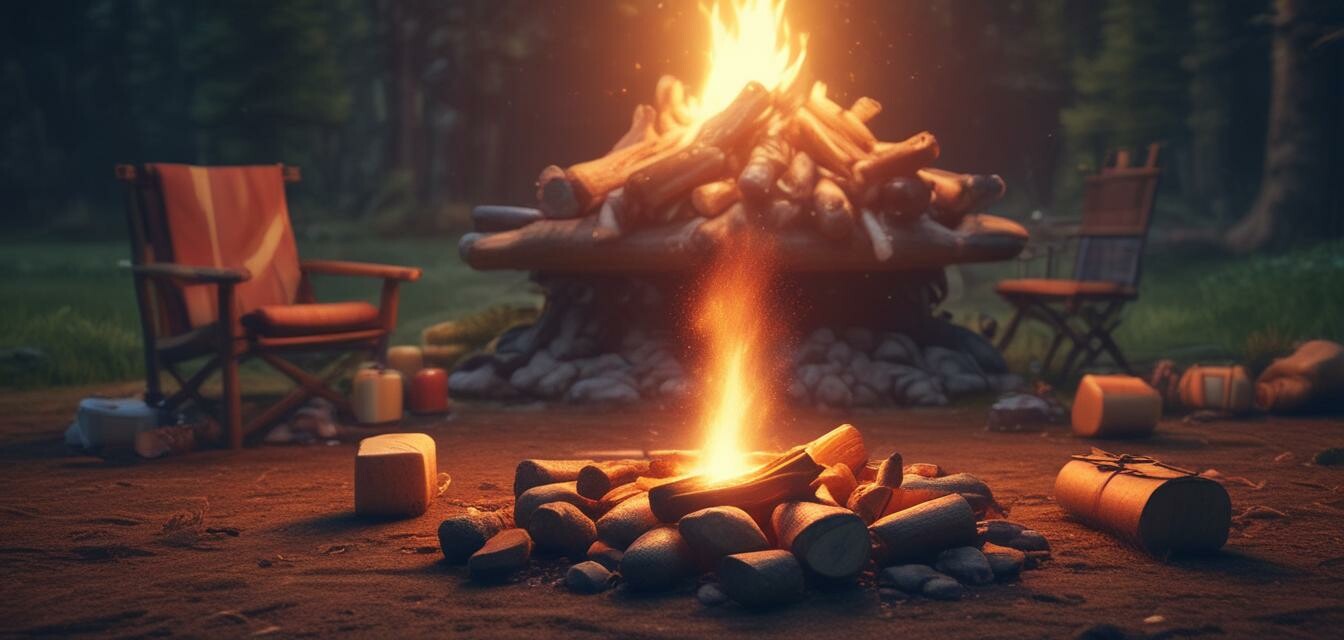
Managing Campfire Leftovers: Tips for Beginners
Key Takeaways
- Plan your meals to minimize leftovers.
- Storage and cooling methods are vital for safety.
- Get creative with leftover recipes.
- Understand portion control to avoid waste.
- Utilize leftovers for snacks and next-day meals.
Camping is a wonderful way to enjoy the great outdoors, but managing what happens after a campfire meal can be a challenge, especially for beginners. Do you ever find yourself facing a pile of leftover food? Fret not! In this article, we'll explore tips to efficiently manage campfire leftovers, ensuring nothing goes to waste and your camping experience remains enjoyable!
Why Managing Leftovers Is Important
Properly managing campfire leftovers not only reduces waste but also maximizes your resources during your camping trip. The right strategies can mean the difference between a delightful outdoor experience or an unsightly mess. Let’s dive into the important aspects!
Planning Your Meals
One of the best ways to tackle leftovers is through careful meal planning before you even pack your bags. Here are some tips for creating a meal plan that minimizes waste:
- Make a Checklist: Write down all the meals you plan to make and their ingredients.
- Portion Control: Prepare just enough food for your group. Reducing portion sizes can lower the amount of leftovers.
- Use Versatile Ingredients: Bring ingredients that can be used in multiple meals to reduce the variety and the amount you cook.
Storage Solutions for Leftovers
After enjoying a hearty meal around the fire, storing leftovers safely is crucial. Here are some storage tips:
| Storage Method | Best For | Tips |
|---|---|---|
| Cooler with Ice Packs | Meats, dairy, and salads | Keep it sealed to maintain temperature. |
| Resealable Plastic Bags | Snacks and small portions | Label and remove air for freshness. |
| Food Storage Containers | Cooked meals | Opt for BPA-free containers for safety. |
Keeping Leftovers Fresh
Once you have your leftovers stored, it's essential to maintain their freshness. Here are some methods:
- Keep the cooler in the shade to maintain its temperature.
- Avoid opening the cooler too frequently.
- Consider using freeze packs to extend the coolness.
Creative Ways to Use Leftovers
Leftovers can be transformed into delicious new meals. Here are some ideas:
- Wraps or Sandwiches: Use leftover cooked meats and vegetables in wraps or sandwiches for a quick meal.
- Breakfast Casseroles: Combine leftover ingredients with eggs for a hearty breakfast option.
- Soups or Stews: Add leftover proteins and vegetables to a pot of broth for a warming soup.
- Snacks: Create trail mixes combining leftover nuts, dried fruits, and any snacks.
Maximizing Leftover Snacks
Leftovers don’t just have to become main meals. You can create some great snacks too! Here are a few ideas:
- Nacho Night: Use leftover beans and cheese to create a nacho platter.
- Veggie Sticks and Dip: Pair leftover veggies with a quick dip made from yogurt.
- Homemade Jerky: If you have leftover meats, consider making jerky for an easy snack.
Food Safety Tips
Food safety is paramount when managing leftovers. Here are some essential tips:
- Avoid letting food sit at room temperature for more than two hours.
- Always reheat leftovers thoroughly before consuming.
- Use a thermometer to check temperatures when reheating.
Additional Resources
For more information on camping essentials, check out our other articles:
- Camping buying guides - Learn what gear you need for your adventures.
- Cooking and meal prep - Discover cooking gadgets that make meal prep easy.
- Tents and shelters - Find the right shelter for your camping trips.
- Camping tips and tricks - Explore helpful advice to enhance your camping experience.
- Safety and navigation - Stay safe with essential navigation gear.
Pros
- Reduces waste and improves resource use.
- Encourages creativity in meal preparation.
- Provides delicious snack options for later.
Cons
- Requires proper storage management.
- Potential for food safety issues if not handled correctly.
Conclusion
Managing campfire leftovers may seem daunting, but with the right planning and creativity, you can turn those extras into something delicious! By following these tips, you'll feel more confident in your camping meals, ensuring a delightful and waste-free outdoor experience. Happy camping!